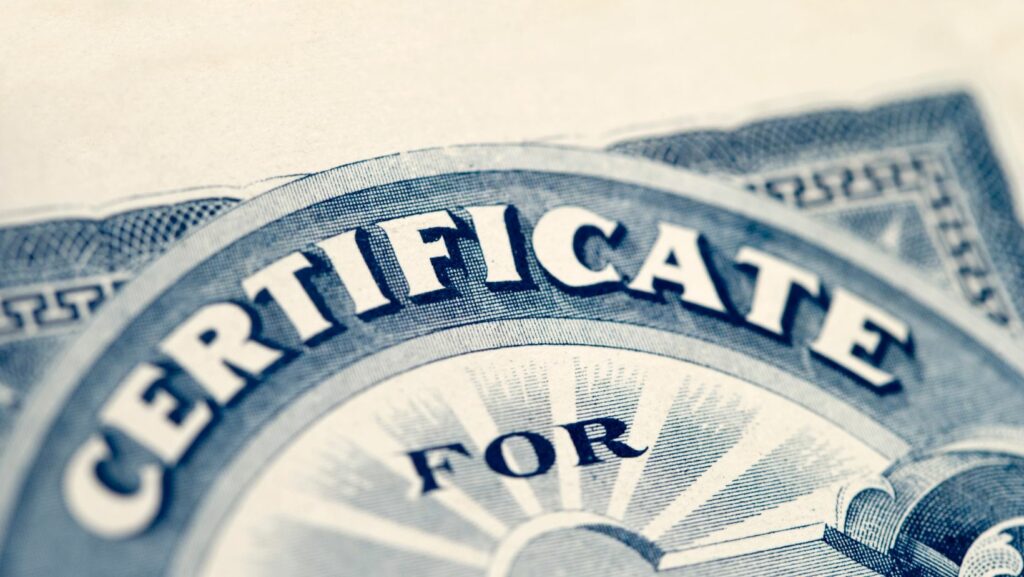Want to save thousands of dollars on your bid bonds and improve your chances of winning contracts?
As a construction contractor, you understand that bonds are a necessary evil. You need them to compete for the jobs you want, but the costs can add up fast when you’re submitting bids on multiple projects.
Here’s the problem…
Construction spending in the United States alone tops $2.1 trillion per year and the fight for market share has never been more competitive. Reducing bid bond costs isn’t just a nice-to-have anymore – it’s a requirement for survival.
The good news is that there are specific strategies you can implement today to slash your bonding costs, while at the same time increasing your chances of winning projects.
You’ll learn:
- Why bid bond costs sting so bad
- The true costs of construction bonding
- 5 Proven cost-saving strategies
- Insider tips to save like the pros
Why Bid Bond Costs Sting So Bad
Bid bond costs are just the tip of the iceberg that can sink your ability to compete effectively.
Most contractors don’t realize: Bid bonds may cost as low as $100 per bond. However, the bid bond process explained is well known by contractors that understand the process and can save thousands in overall bonding costs per year.
But when you are submitting bids on 20, 50 or 100 jobs each year, those costs quickly add up. And that’s just the beginning of the problem…
The hidden cost of construction bonding is much higher than you think.
It’s the opportunity cost of having your bonding capacity artificially limited or too expensive, leaving you sitting on the sidelines while your competition walks away with the most profitable projects. I’ve seen contractors miss out on $1 million jobs simply because they couldn’t secure bonds at reasonable rates.
I don’t care how strong your company is, if you’re paying premium rates for bonds, you have one of two options – either raise your prices to cover the costs (making you less competitive) or eat the costs and reduce your margins.
The True Costs of Construction Bonding

Let’s talk about real money, the money that’s bleeding contractors today.
Contractors obsess about bid bond costs, but the real money is in performance and payment bonds.
They typically range between 0.5% and 4% of the total contract price and vary based on your individual surety.
Here’s how the numbers break down:
- $250,000 project x 2.5% = $6,250 in bond costs
- $500,000 project x 2% = $10,000 in bond costs
- $1 million project x 1.5% = $15,000 in bond costs
But here’s the thing that kills most contractors…
Where you fall in that range is determined almost entirely by your credit score. Contractors with excellent credit pay 0.5% to 1.5%, while poor credit contractors can pay 3% or more.
That’s right, if your credit is bad, you’re paying double the cost of an excellent contractor for the same surety bond.
On a $1 million project, that’s a $15,000 difference. If you do 10 projects like that per year, you’re talking $150,000 in unnecessary costs because your credit report is a mess.
Strategy #1: Fix Your Credit Like Your Business Depends On It
Here’s the fastest way to significantly reduce your bond costs…
Fix your credit score. Up to 80% of your surety bond pricing is determined by your creditworthiness.
First, pull your credit reports from all three bureaus. Fix errors, late payments, and get any questionable accounts removed. I know contractors that found errors on their credit reports that were costing them thousands in higher bond premiums.
Next, focus on these key credit factors that sureties focus on most:
- Payment history (35% of your score): Set up automatic bill payments
- Credit utilization (30% of your score): Keep below 30% of limits
- Length of credit history (15% of your score): Keep older accounts open
- Types of credit (10% of your score): Have a mix of revolving and installment credit
Move from “fair” to “excellent” credit and you can potentially cut your bond costs in half. On $2 million in annual bonding, that’s $20,000+ back in your pocket every year.
Strategy #2: Strengthen Your Financial Position
Sureties don’t just look at your credit score, they analyze your entire financial picture.
But here’s the critical mistake most contractors make…
Submitting old, incomplete, or poorly organized financial statements. Sureties want to see CPA-prepared financials over internally prepared, and they want to see a trend of consistent profitability and growth.
Take these steps NOW:
- Work with a CPA that understands construction accounting
- Keep clean, up-to-date books all year long
- Build cash reserves (sureties love 6+ months of operating expenses)
- Track and improve your key financial ratios
One contractor I know cut his bond costs by 40% just by cleaning up his financials and showing he was consistently profitable.
Strategy #3: Build Long-Term Surety Relationships
Here’s something contractors consistently get wrong…
They shop around for individual bonds like they’re buying office supplies, always looking for the lowest price possible on each separate bond.
The smarter approach?
Build a long-term relationship with 2-3 quality surety companies and prove your value as a loyal client.
Sureties offer their best rates to contractors they know and trust. Many will give you free bid bonds as established clients with good track records. Some even offer zero-premium programs to their top clients.
But you need to earn that treatment first.
Finish your projects on time and under budget. Proactively communicate any potential issues. Pay your premiums on time.
One regional contractor I know gets completely free bid bonds and 25% discounts on performance bonds because he’s been an exemplary client for five years.
That relationship is worth tens of thousands a year.
Strategy #4: Optimize Your Project Mix and Timing
Not all projects are created equal when it comes to surety companies.
Higher risk equals higher bond costs, and these types of work fall into that category:
- New types of construction you haven’t done before
- Projects with aggressive timelines
- Work in new geographic markets
- Design-build projects
Focus on work you have done many times before and for which you have the best experience and track record. Sureties love contractors that stick to their core competencies, and they reward those contractors with lower rates.
Build your capacity strategically. Take on one new or higher risk project type at a time, and once you show success, leverage that track record to get better rates on future work.
Timing also matters. Bidding multiple large projects at once stretches your bonding capacity and increases costs.
Strategy #5: Master the Art of Bond Shopping
Even if you have strong relationships with 2-3 surety companies, you should still occasionally test the market.
But do it the right way.
Don’t shop around for every single bond – that’s how you kill your relationships and end up with higher costs. Instead, shop your entire bonding program once per year or when significant changes occur to your business.
Here’s how to shop correctly:
- Compare overall program costs, not individual bond prices
- Evaluate service quality, not just pricing
- Consider surety appetite for your project types
- Research surety’s financial strength ratings
Some sureties have expertise in certain types of work or specialize in certain size companies. Find your perfect fit.
Putting It All Together
Saving money on your bid bonds isn’t a one-time task, it’s a combination of several strategies that work together to produce massive savings over time.
Start with your credit and financials since those have the largest impact. Then work on building solid surety relationships while becoming strategic about the types of work you take on.
Contractors that do this well see huge results:
- 30-50% reduction in overall bonding costs
- Faster bond approvals and turnarounds
- Increased bonding capacities
- Competitive advantages in the bid process
The goal isn’t just to save money, it’s to set your business up for profitable growth.
Default rates in construction have held steady at less than 1% for the past 20 years, making surety a profitable, competitive business that leaves room for deals for well-positioned contractors.
Start with a credit review and financial cleanup. Those foundational steps will immediately improve your bonding profile and can often be completed within 60-90 days.



